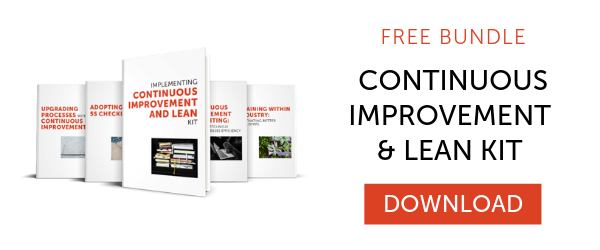
Continuous Improvement
5 min read
Lean Manufacturing Lessons From Wikipedia

When Jimmy Wales, founder of Wikipedia, was interviewed on NPR’s “How I Built This,” he revealed a valuable insight — sharing and improving knowledge is hard work.
The challenges they faced along the way aren’t too different from the challenges that manufacturing companies face today. How can we efficiently capture, distribute, and improve our collective knowledge?
Ask anyone who’s had to document or maintain process knowledge (work instructions, SOPs, or training material), the work is ongoing and relentless. Still, Wikipedia was able to do this on a global scale; all while maintaining information standards and control.
Wikipedia's Problem with Document Revision

Prior to Wikipedia, Wales ran Nupedia, a similar encyclopedia website but without collaborative moderation tools. Wales describes the challenges of collaborating on Word documents, and I couldn’t help but feel like this sounded familiar:
“...the only real way to collaborate back then, was to email around a word doc... the typical case was, nobody responds. But the worst case is, five people respond and they’ve all changed the document in different ways. Now you’ve got to figure out how to integrate (consolidate) that all.”
In other words, their document revision process needed help. Collaboration needed to be done faster and the tools they were using were ineffective.
Manufacturing's Problem with Document Revision
The unfortunate truth is that many businesses still use outdated methods for collaboration without recognizing the downfalls.
For Wikipedia, this meant an unsustainably slow rate of article production.
For manufacturing, poor document revision practices inhibit continuous improvement and create waste.
When documentation of core procedures is difficult to maintain/update, improvements are discouraged. People would rather avoid the long, bloated email chains than follow-through with process improvements.
Outdated revision processes not only discourage improvements, they increase the risk of outdated information floating around. Since standard procedures are difficult to keep up-to-date, documents become static, not changing for years on end.
This lack of accuracy impacts quality standards and creates enormous safety risk for employees.
Wikipedia Gets Lean
To solve for this challenge of collaboration, Wikipedia found a solution that was truly in the spirit of Lean manufacturing. Without a revenue source, they had to find an efficient way to collect knowledge from their users, while keeping the site safe and accurate.
“There was no money to hire anybody, so as a community working together, we had to find our own solutions.”
Wikipedia operates like a community by self-moderating for errors or vandalism. If changes or improvements are made to an article, the community will either accept or reject the changes as they see fit. Much like the process for Standard Work, Wikipedia pages are treated as living documents, constantly evolving over time.
The Lesson For Manufacturers
Although they felt limited by their budget at the time, the site's Lean solution enabled a rate of article creation that was faster than they could have ever dreamed. Rather than throwing money at the problem or sticking to traditional methods of article production, Wales recognized that an innovative process improvement could give Wikipedia the best chance at success.
Flashing forward, Wikipedia is now the fifth most popular website in the world — with over 5,937,100 articles in English alone.
That impressive accomplishment was achieved because the founders were forced to ask themselves, "How can we do more, with less?"
Creating more value with less waste is the heart of Lean manufacturing, but the solutions may not always be obvious. Wikipedia teaches us what it's important to constantly challenge assumptions for how work is done. Traditional methods for collaboration didn't work for them, and they don't work for manufacturers.
I find it fascinating the insights we can glean across industries and apply to our own. What other parallels have you seen in industries that can apply to your own? Let us know in the comments below.
Topic(s):
Continuous Improvement
Related Posts
View All Posts
Frontline Digital Transformation
The Most Common 8 Wastes of Lean Manufacturing & How to Manage Resources
23 min read
Manufacturing is all about making the highest quality products at the lowest cost. Reaching that goal means searching for and eliminating causes of wasted time, wasted...
Continue Reading
Standard Work
Top 10 Shigeo Shingo Quotes on Lean Manufacturing
1 min read
Shigeo Singo: The Ambassador of Lean Shigeo Shingo was an industry leader of Lean manufacturing principles and philosophies. Originally brought on by Toyota to update their...
Continue Reading
Continuous Improvement
A Lesson in Lean Manufacturing From the North Pole
4 min read
If Santa Claus ran a toy company, he’d have the best lean manufacturing operations in the industry. A lean analysis shows that he delivers custom tailored products to every...
Continue Reading




